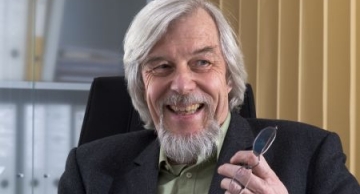This week the CMS collaboration will publish the results of its search for the Higgs boson that were presented at CERN in December 2011 [1].
Nine papers will be submitted for publication using the entire data sample of proton-proton collisions…
News
|
incandel |
Physics
CMS is organizing a Workshop entitled Perspectives on Physics and on CMS at Very High Luminosity, HL-LHC which will take place in the Ukrainian city of Alushta in the Crimea, 28-31 May, 2012. JINR (Dubna) will serve as a host. Alushta is a scenic…
|
lucas |
Collaboration
Dear CMS collaborator,
The Technical Coordination team is organizing an evacuation exercise of the CMS underground caverns (USC55 and UXC55) on Friday the 3rd of February from 14:00.
We would like to perform this exercise with the maximum number of…
|
achintya |
Physics
“If you remember, Mark Twain once said, ‘There are three kinds of lies: lies, damned lies, and statistics.’ If you use statistics in an improper way, you could get pretty much any result,” says Greg Landsberg, CMS’s new physics coordinator. “The…
|
achintya |
Collaboration
On 10th January, a delegation from Serbia, led by President Boris Tadic, arrived at CERN to sign the agreement that would grant Serbia associate membership to CERN, as a step towards full membership. The agreement has to be ratified by the Serbian…
|
lucas |
Collaboration
The official CMS calendar is now available in a variety of new formats:
As an interactive webpage page on the new CMS website
As a simple subscription using your Google calendar
As a simple subscription using your Apple iCal calendar
The classic…
|
gill |
Collaboration
The next Tracker Week is 30-Jan to 3-Feb.
Details of the meetings are at:
https://indico.cern.ch/conferenceDisplay.py?confId=159416
Please get in touch with session chairs to arrange your presentations.
|
achintya |
Collaboration
Rolf Heuer, the Director General of CERN, welcomed back CERN personnel and users after the holiday period, at the annual New Year’s presentation held on 11th January.
The LHC
Heuer opened the talk with congratulations to all the accelerator…
|
nduponts |
Collaboration
An evacuation exercise of the USC55 and UXC55 caverns will be organized on the 3rd of February 2012 around 2 pm, we need volunteers to help and to participate. Please contact nduponts@cern.ch if you are interested. Thanks !
|
achintya |
External news (e.g. BBC)
Serbian President Boris Tadic and Director General of the European Organization for Nuclear Research (CERN) Rolf Dieter Heuer signed on Tuesday in Geneva an agreement declaring Serbia a CERN Associate Member State.
|
pivarski |
Physics
Data are the currency of physics. As data accumulate, measurement uncertainty ranges narrow up to a certain point, increasing the potential for discoveries and making non-observations more stringent, with more far-reaching consequences. In collider…
|
lapka |
Collaboration
The Collide@CERN Artist-in-Residence programme is currently seeking CERN scientists interested in engaging in thought-provoking and creative collaborations with visiting artists.
In early 2012, a Digital artist will take up a 2-month residency…

![A typical candidate event including two high-energy photons whose energy (depicted by dashed yellow lines and red towers) is measured in the CMS electromagnetic calorimeter. The yellow lines are the measured tracks of other particles produced in the collision. <a href="https://cdsweb.cern.ch/record/1406073">[ See more event display images. ]</a> CMS Event Display](/sites/default/files/styles/grid3_360x195_/public/field/image/gg-run177878-evt188723900-3d_0.jpg?itok=JG8KPwOb)





